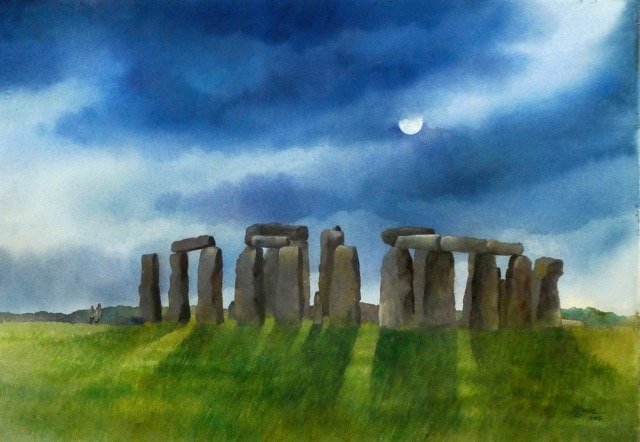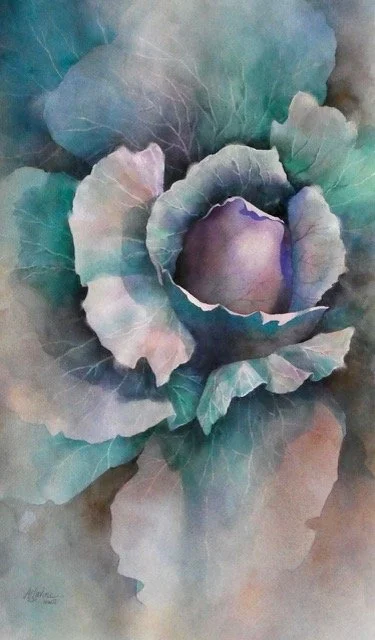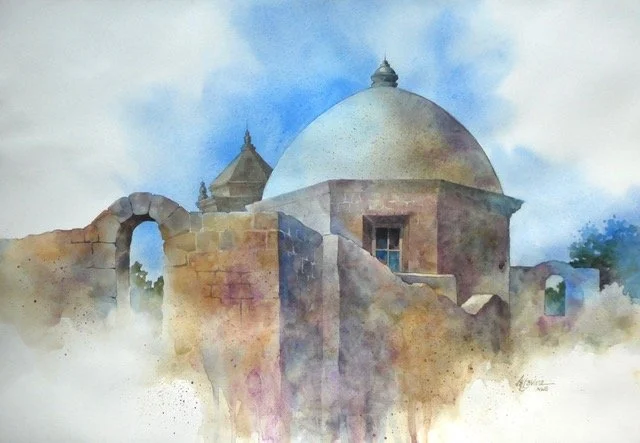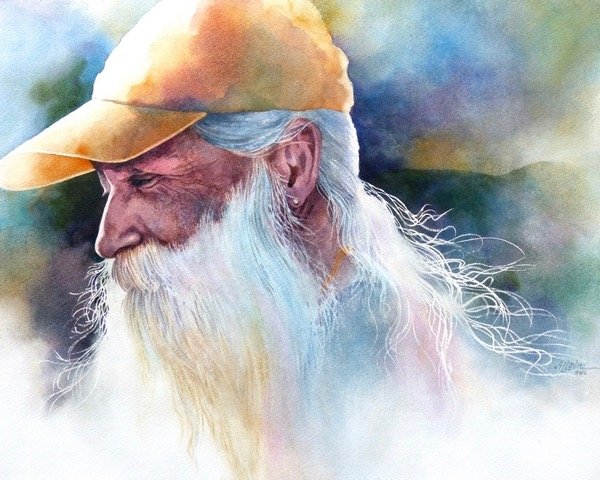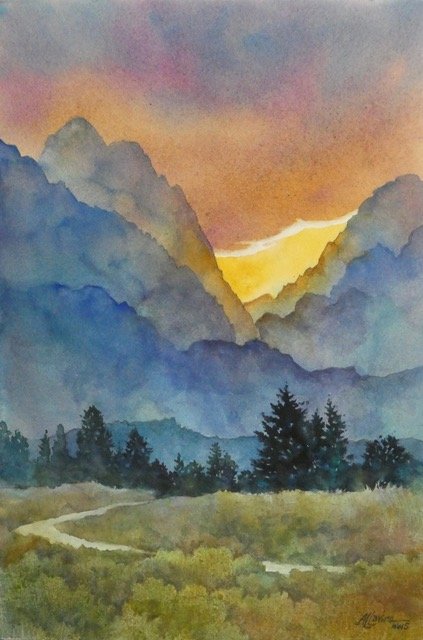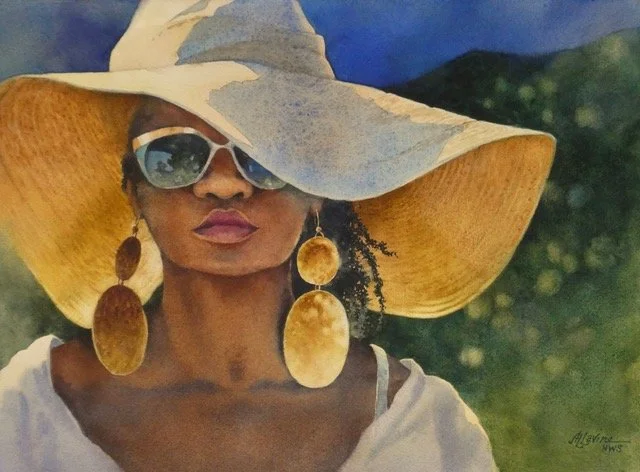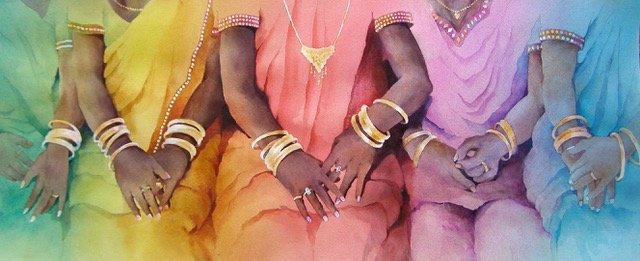About the Workshop:
Alexis believes that superb DESIGN is essential in making art that excels. An unremarkable painting can be elevated into one that is powerful and engaging ... with the application of strategic, thoughtful, and dynamic design! During this workshop, we will learn the concepts of design and how to integrate them into our paintings ... to take our paintings to that next level. We will learn how to identify what we want to describe, express, and communicate – and how to manipulate our lines, shapes, values, and colors, to achieve this ... in other words, how to design our paintings for the best results! We’ll explore a variety of subjects and see how we can turn them into exciting, emotional, unique works of art – with the right combination of creative design... and, as always, solid drawing, effective painting techniques, and imagination.
This workshop will be on Zoom.
About the Artist:
Alexis believes in the power of design so strongly that she recently gave up her decades-long devotion to plein air painting to devote herself to studio work, where she could take more time to design her very best paintings! Teaching is one of the most important things she does. She loves to share her passion for art by guiding others to reach their creative goals, and she teaches with enthusiasm, commitment, passion, humor, and kindness. She has taught watercolor for over two decades, from California to the Caribbean. She has seamlessly adapted her classes to the Zoom platform and believes that her online workshops are as good as, and in many ways better, than in person classes. Honored as one of Watercolor Artist Magazine’s “Ones toWatch,” she is a signature member of the National Watercolor Society,Watercolor Honor Society, Transparent Watercolor Society of America, and others. Her paintings reside in collections throughout the country and overseas, and they can be found in galleries from the Mid-Atlanticto the Virgin Islands.
www.alexislavineartist.com
Email: alexislavineartis@gmail.com
Supplies:
If you already have watercolor supplies, feel free to use what you already have. You may choose to buy additional supplies on this list. Please remember that purchasing additional supplies is entirely optional! If you are new to watercolor, this is a good array of supplies, to get you started.
PAPER: Paper is the most important item, as far as quality and expense are concerned. Buy the best paper that you can afford; save your money on other items, such as paint and brushes. I recommend good quality paper, such as Kilimanjaro, D’Arches, or Fabriano, preferably 140 lb. cold-pressed paper. Buy several full sheets, (22" x 30".) These can be cut into halves or quarters for smaller paintings. Working on a watercolor block is fine too. Sometimes I like to work on hot pressed paper, which is smoother than cold pressed.
PAINTING BOARD: Unless you are using a block, you will need a waterproof board to support your paper, about 1 inch larger than your paper in both directions. A board that measures 16"x23" will work well for either a half or quarter sheet of watercolor paper. Gatorboard or masonite work very well for this.
PAINT: My favorite brands of paint are American Journey and DaVinci watercolors. These are professional quality paints, reasonably priced. There are many brands available, with a huge variety of pigments, tube sizes, and prices. Whatever you buy, it’s a good idea to check the permanency rating first - you don’t want your paintings fading away! Basic pigments: Here is my palette. The pigments in capital letters are more basic, if you are just building a palette. The others are less essential for a basic set-up, but I love to use them, and you will surely see me dipping my brush into them. I generally choose pigments which are not heavy stainers. LEMON YELLOW, GAMBOGE, quinacridone gold, YELLOW OCHRE, BURNT SIENNA, sepia, CADMIUM RED DEEP, PERMANENT ROSE, opera, cobalt violet deep, PERMANENT MAGENTA, mauve, ULTRAMARINE BLUE, cobalt blue, CERULEAN BLUE, Prussian blue, turquoise, Mint Julep (American Journey brand only,) VIRIDIAN GREEN, SAP GREEN, green gold.
*** PLEASE NOTE: I will surely NOT use very pigment listed here, in your class! These paints are on my palette all the time. For any single painting I might use as few as two or three and perhaps as many as a dozen ... but never, every single one in any single painting!
BRUSHES: I do not spend a huge amount of money on sable brushes. There are lots of synthetic brushes and synthetic/natural blends that are excellent and much less expensive. My current favorites are Black Velvet rounds, made by Silver Brush, and Robert Simmons one-stroke flats, series 721 synthetic. I also love my Princeton Mottler brushes, 1” and 1.5” sizes. If you will be painting small, the following brushes will suffice: 1" flat, 1/2" flat, and a #6 round brush (with a good point.) You may also want a 1/4" flat brush, a larger round brush such as a #12, and a larger flat brush, such as a1 1/2" brush, particularly if you will be painting larger paintings. An old toothbrush is great for spattering paint. It is also helpful to have a couple of different sized scrubber brushes, such as the "Fritch" scrubber, and a few fan brushes for blending.
PALETTE: I use a "Miller's Workhorse Traditional Watercolor Palette" from Cheap Joe's. A covered palette, such as the "workhorse," or the Heritage, Pike, or Wood palette, is best, since it will keep your paints moist between painting sessions. You can also use an enameled butcher tray, or even a white dinner plate, and cover your paints with plastic wrap. Whatever you use, make sure you have spaces for all of your pigments and a large, white mixing area.
OTHER SUPPLIES: Small sketchbook, tracing paper, sketching pencils, soft eraser,plastic water bowl, absorbent cloth rags or paper towels, natural sponge, cotton swabs,salt, 4 bulldog clamps, spray bottle (with an adjustable spray.) Liquid frisket is very helpful to use with some subjects; if you use it, you will need several small, inexpensive brushes to apply it with, and a small amount of liquid soap, and a frisket remover (rubber cement pick-up tool.) I will be using photographs as references for my demos. I will provide you with copies of them. You are welcome to use my photos as the basis for your own paintings. Or, better yet, use your own photos. Or sketches.
One important topic I always cover is how to use your photos in a creative, interpretive manner – without copying them!***
PLEASE NOTE: Do NOT use photos taken by other people, photos from Facebook or other websites, or from any kind of printed materials, such as greeting cards or magazines, or paintings done by other people. PLEASE use your own photos, sketches, and ideas. Or mine...
*** Also, just so you know, I buy most of my supplies from Cheap Joe’s. I think their selection, prices, and customer service are unbeatable. 1-800-227-2788 www.cheapjoes.com
Cost
$170 for TRA Members, $190 for Non-Members, if paid online. $160 for TRA Members, $180 for Non-Members, if by cash or check. If you are paying by cash or check, please register here and mail your check to TRA and email Judy Milsaps.

